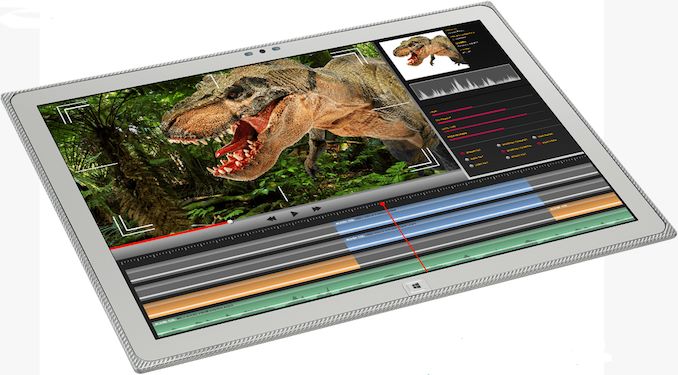Panasonic to Cease LCD Production by 2021
by Anton Shilov on November 26, 2019 12:00 PM EST
Over the past two decades we've seen an explosion of growth in the market for liquid crystal displays, but this growth has also led to its maturation. Companies have scaled up and merged, new firms have brought down costs and production technology has continued to advance, resulting in a cut-throat market for LCDs that offers negligible profit margins. So as we often see in these cases, another competitor is getting ready to bow out: Panasonic is announcing that it will exit production of LCDs by 2021.
This has been a long time in the marking for Panasonic; the company once used to be a leading maker of televisions, but because of intense competition from Chinese and South Korean manufacturers, previously ceased making LCD TVs in 2016. Instead, in recent years the company has focused on production of LCDs for industrial and automotive applications in order to find a more profitable niche of the LCD market. But it looks like even specialization did not produce the kind of returns required by Panasonic, and as a result they are exiting the LCD market altogether. It is interesting to note, however, that they aren't leaving the displays market entirely; the company will continue offering OLED televisions.
Panasonic Liquid Crystal Display Co. — the IPS LCD plant in Himeji, Hyogo Prefecture — was established in 2010 and absorbed all of Panasonic’s LCD assets in 2014. According to Nikkei, Panasonic plans to repurpose the factory to produce automotive batteries and keep all of its 500 employees. Workers who will not be needed at the new facility will be relocated to other facilities that belong to Panasonic and/or will get labor management consultations.
Related Reading:










32 Comments
View All Comments
melgross - Tuesday, November 26, 2019 - link
So who, beyond LG, will make OLED Tv panels? It’s such an interesting situation that smartphone OLEDs and Tv OLEDs are so different that while Samsung has tried, and failed, to make Tv panel size OLEDs, LG has been trying to make smartphone sized OLED panels, but they’re still terrible.vladx - Tuesday, November 26, 2019 - link
Both Samsung and Sharp are planning to start OLED production in 2020-2021. I'm sure there will be 1-2 Chinese manufacturers as well, but might join the market later in 2022-2023.lioncat55 - Tuesday, November 26, 2019 - link
Wait, Samsung doesn't make OLED panels?vladx - Tuesday, November 26, 2019 - link
Specifically TV panels, they stopeed when they realised it was too expensive and will start production again after 2020.lilkwarrior - Tuesday, November 26, 2019 - link
Incorrect today; that was their stance until they now realized OLED dominance in the high-end TV market and will be making QD-OLED panels in addition to their existing portfolio.mantikos - Wednesday, November 27, 2019 - link
Which are just quantum dot LED TVs with OLED backlighting as discussed here on Anandtech previouslysubtec - Saturday, November 30, 2019 - link
QD-OLED is true per-pixel emissive, not a backlit panel technology like LCD. In fact, it's similar to LG's WOLED TVs in that it uses a single color for the OLED emitters (blue, in the case of QD-OLED, vs. white for WOLED), and then employs color converters to make the other colors. WOLED uses traditional red, green and blue color filters for each colored subpixel (plus an unfiltered white subpixel to increase peak brightness), whereas QD-OLED uses quantum dot color converters for red and green subpixels, leaving the blue OLED unconverted for the blue subpixels.limitedaccess - Tuesday, November 26, 2019 - link
They make smaller panels for use in smartphones, tablets and laptops but not larger one for use in TVs.Sivar - Tuesday, November 26, 2019 - link
They make small OLED screens for mobile phones, but to the best of my knowledge they have focused entirely on LCD for television-sized panels.cheinonen - Tuesday, November 26, 2019 - link
Samsung makes OLED panels for phones, but they use a different diamond subpixel structure with a GGRB alignment while their OLED TV panels used a traditional RGB subpixel structure, like an LCD TV does, though slightly different with a larger blue subpixel. LG uses a WRGB OLED subpixel structure, which is basically a white pixel for luminance boosting, and RGB pixels through filtering. For a true RGB OLED, you'd need to have one of the Sony BVM displays before they moved to a dual-layer LCD design.Samsung can't do the WRGB OLED design because it uses patents that LG owns, and no one can seem to do RGB OLED subpixels at scale (that Sony BVM was $45,000 for a 30" display), though they would offer high peak light output and better color saturation in highlights if they can pull it off.